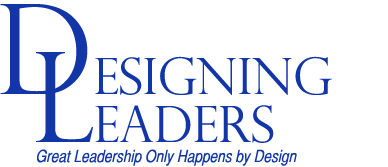One challenge that’s getting tougher and tougher in various markets is recruiting STEM (Science, Technology, Engineering, Mathematics) employees. Forward-thinking organizations are figuring out how to reach the next generation of employees (that is, the folks coming in behind the Millennials) in order to make sure the talent they need is available in the coming years.
Reaching out to kids at an early age increases the chances of them holding onto their creative interests in the face of competing pressures later in their teenage years and into university and beyond. In his book Drive, author Daniel Pink talks about how kids commonly have an interest in creativity when they’re young, but then those interests tend to get pushed aside, whether because they don’t have art class anymore after the 6th grade, or because their parents try to push them toward something “practical,” or because peer pressure leads them to pursue something else, or other reasons. Encouraging kids to hold onto their interests in their younger years makes it more likely they can keep that interest going once they enter the professional world.
The idea of reaching kids to encourage their interest in creative fields isn’t new. Westinghouse used to be a major supporter of science fairs, an effort that continues today in such venues as the Siemens Competition in Math, Science, and Technology and the Regeneron Science Talent Search. They are designed to encourage kids to develop their talents and hold onto their interest through school and into the professional world, and they have been around on a large scale since the 1950s.
Of course, society and technology have changed and kids have changed since the 1950s, and so the ways to reach them best have changed too. The science fairs are still going on, and still a great idea, but there are more opportunities. TV shows like Design Squad Nation and MasterChef Junior help showcase kids who are exploring their talents. Companies hold contests to design new smartphone apps. Internship programs for high school students allow teenagers to see what careers are possible. Depending on your particular field, you should look at ways to encourage young Creatives, which has the added benefit of getting your brand out in front of them so they look at you as a potential employer down the road. Sponsoring design contests, showcasing young Creatives though your website, blog, or Facebook, offering “shadow programs” where teenagers can come spend time with Creatives in your firm…well, these are probably the most obvious ideas. There are plenty of ways you can stand out from other firms.
Now of course, helping kids hold their interest in creative fields does not mean they will definitely come work for you when they enter the professional world. Sure, if you have kept your employment brand in front of their faces for years, there is a better chance they will think of you as THE firm for which they want to work, but there are no guarantees. So if you don’t have a pretty definite return on investment, what’s the point? Well, consider that in a broad sense what you are doing is expanding the recruiting pool for the future. While the teenager whom you have inspired might not come work for you, the friend THEY inspire just might. You are also bringing new ideas into your particular field, so even if the kids with whom you work are later employed somewhere else, the creative ideas they generate can serve as a springboard for your Creatives to innovate further; in essence, you are expanding the creativity of your entire field by developing the talents of future Creatives. Even if you don’t see an immediate, direct return to you, there are second- and third-order effects of enhancing the creative workforce that will ultimately benefit you.
Kids are impressionable. They are also creative. Why not impress upon them that creativity is a good thing?
Get ’em While They’re Young

